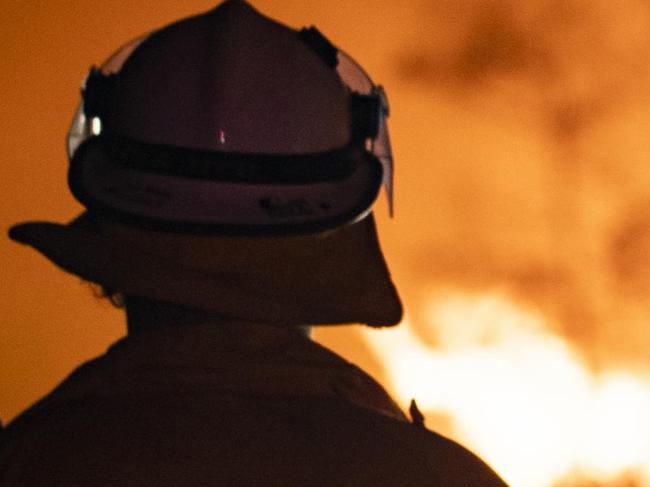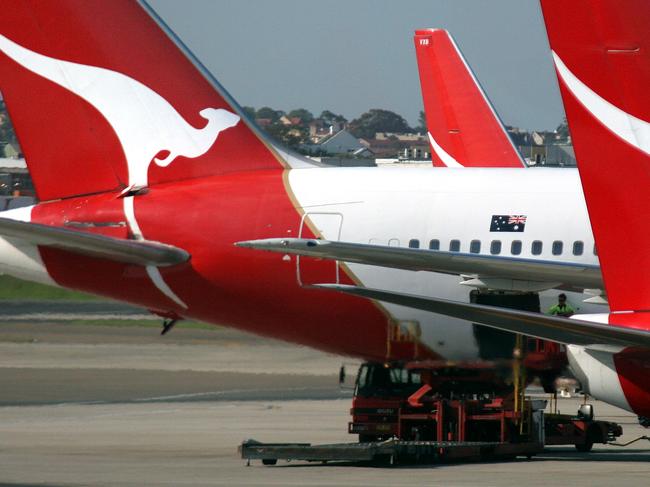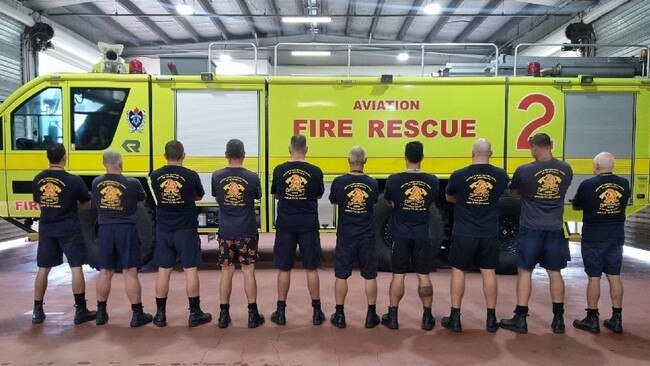‘Critical’: Union’s fears over shortage of aviation firefighters at airports across Australia
A shortage of aviation firefighters following the height of the pandemic has exposed a massive safety gap at airports, a union has warned.
NewsWire
Don't miss out on the headlines from NewsWire. Followed categories will be added to My News.
A “crippling” shortage of aviation firefighters due to staffing cuts during the pandemic has allegedly exposed a huge safety gap, prompting a union to launch political and industrial action.
United Firefighters Union aviation branch secretary Wes Garrett said the staffing cuts had serious safety implications for Australia’s air travellers.
He said Airservices Australia had slashed the number of firefighters by 94 during the pandemic.
“With demand for airline services now increasing, this dramatic reduction in staff has meant that there are simply not enough aviation firefighters available to safely and effectively support the Australian Aviation Rescue Fire Fighting Service network,” he said.
Mr Garrett said firefighter numbers at Sydney airport had been cut from 94 to 77.
In Melbourne, numbers were down from 91 to 65, and on the Gold Coast numbers fell from 31 to 21.
He said it was a similar situation at many large airports across Australia.
“As a result of these staff cuts, our remaining firefighters are being forced to work excessive overtime to cover the shifts required to ensure air travellers and airport workers are protected,” he said.

“At some locations, aviation firefighters have little or no opportunity to take leave and they are exhausted, which in turn raises serious concerns with fatigue management.”
An Airservices Australia spokesperson told NCA NewsWire that some team members had chosen to retire early.
Airservices is also actively recruiting, with 48 firefighters to be operational this year and 72 next year.
“Our staffing requirements for Aviation Rescue Fire Fighting services at 27 of Australia’s busiest airports are regulated by Civil Aviation Safety Authority and we continue to meet all service requirements for aviation rescue firefighting services nationally,” the spokesperson said.
Mr Garrett said the level of protection provided at Australian airports was often falling short of regulation requirements.
“Pre-Covid, Sydney and Melbourne ARFFS required 17 firefighters on duty. Today that number stands at just 11,” he said.
“With the current level of staffing being provided at Sydney, Melbourne, Brisbane and Adelaide there are not enough aviation firefighters available to control the fire, exit their trucks, enter a crashed aircraft and assist or rescue passengers in a timely manner.
“There is a precarious balance between our ability to save life and the time it takes us to respond.
“Emergency response is not predictable – it is time critical. Aircraft intervention is time critical. It’s a matter of minutes and seconds that can determine our ability to successfully intervene and save lives.”

But the Airservices spokesperson said Mr Garrett’s claims were incorrect.
“We continue to meet all service requirements nationally to ensure the safety of airlines, airports and the travelling public,” they said.
The union has launched a new campaign titled Three Minutes to Live – Keep Our Skies Safe to draw urgent attention to the issue.
The title reflects aviation firefighters having just three minutes to respond before an aviation fuel fire penetrates the aircraft cabin.
Mr Garrett said the campaign was aimed at all political parties contesting the federal election.
The union is calling for an urgent review of Australia’s adherence to international aviation safety regulations. It wants to address the shortage of aviation firefighters and opposes the privatisation of aviation firefighting at remote and regional airports.
Following the breakdown of enterprise bargaining negotiations, which began in October last year, Mr Garrett said aviation firefighters had also voted to take protected industrial action.
“Aviation firefighters exhausted their recreation leave balances, provided rostering flexibility outside of our enterprise bargaining agreement framework and have accepted payment in time off rather than wages – all to help Airservices manage the economic fallout of the Covid-19 pandemic,” he said.

“Airservices also cut 94 firefighters from the service through a retirement incentive scheme, and this has negatively impacted our capacity to fully staff aviation firefighting services at numerous stations around the country.”
Over the past five years, firefighters averaged wage increases of 1.2 per cent per year, while inflation averaged 1.8 per cent per year.
“Now, Airservices is offering just a 0.95 per cent increase in the first year, with no clear forecast for wage increases in years two and three,” Mr Garrett said.
“Our members are saying enough is enough and we are seeking a wage increase that matches, not exceeds, the cost of living.”
Mr Garrett said the protected industrial action would begin with firefighters not responding to corporate emails and refusing to wear official uniform on duty, with the exception of personal protective clothing.
“Aviation firefighters are also placing limitations on the allocation of overtime, demanding that Airservices cover any additional hours by recalling an additional firefighter for full shifts rather than rostered firefighters adding extra hours to their shifts,” he said.
“Public safety is always our primary consideration and our protected industrial actions will not compromise air traveller safety.”
The Airservices spokesperson said the body was continuing to negotiate “in good faith” to reach a fair agreement that was consistent with the government’s public sector workplace relations policy.
Originally published as ‘Critical’: Union’s fears over shortage of aviation firefighters at airports across Australia



